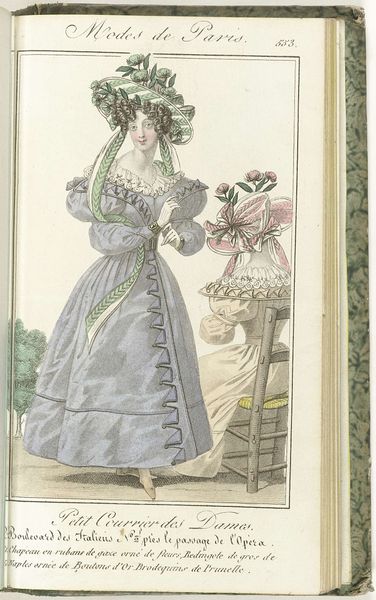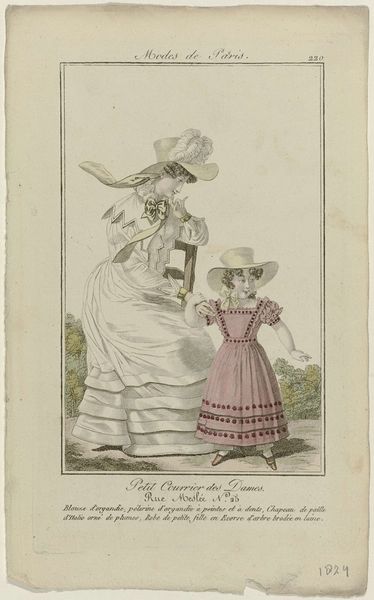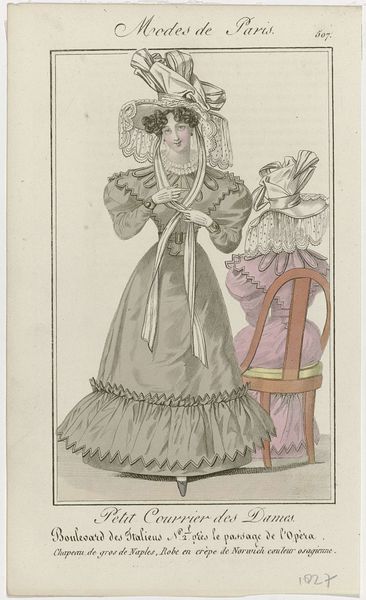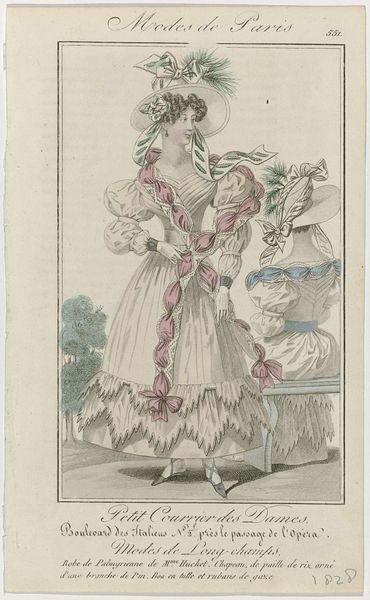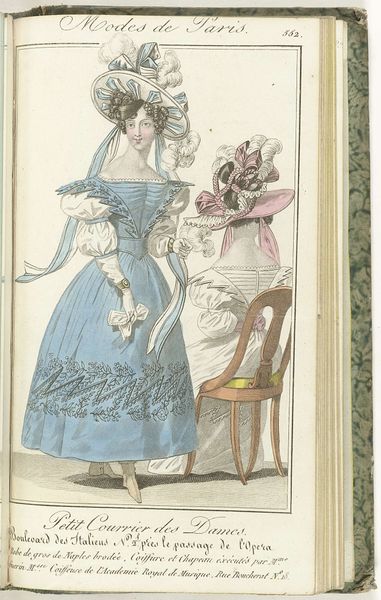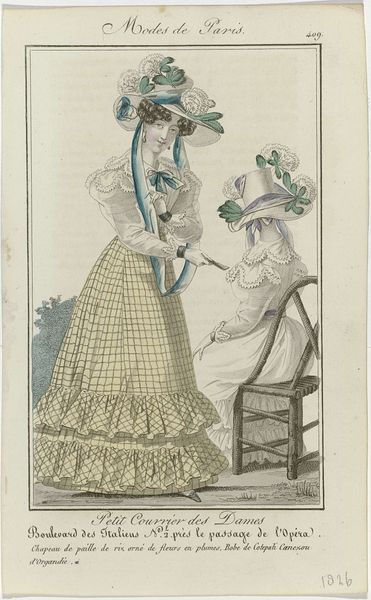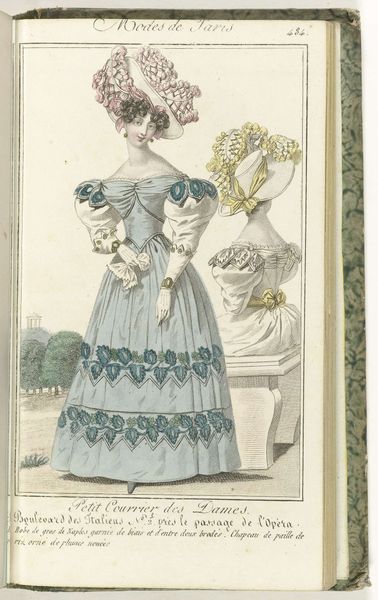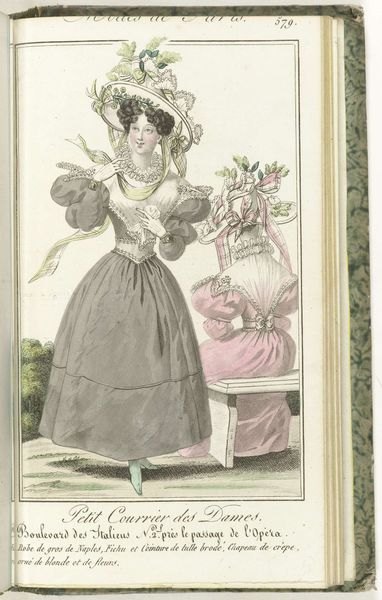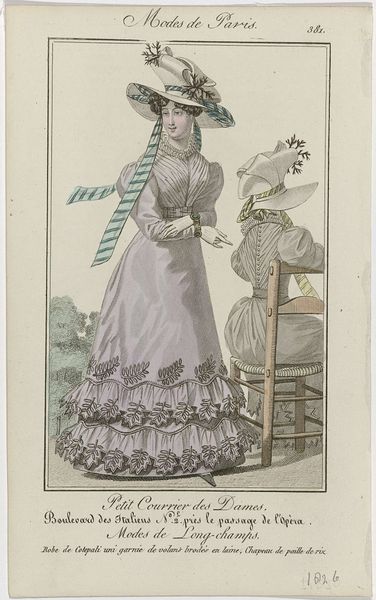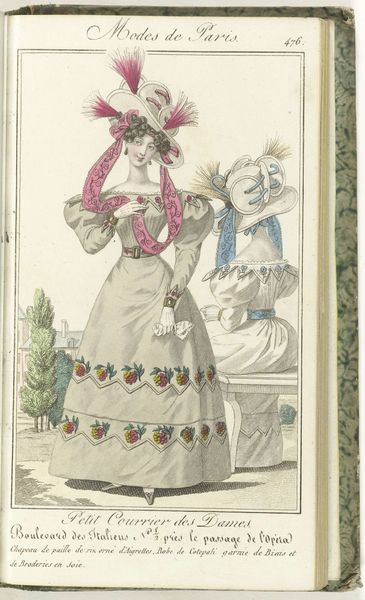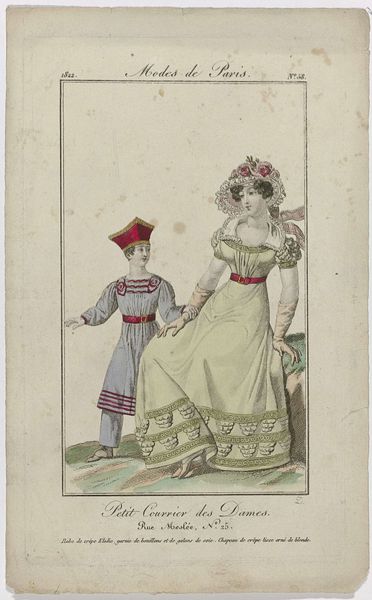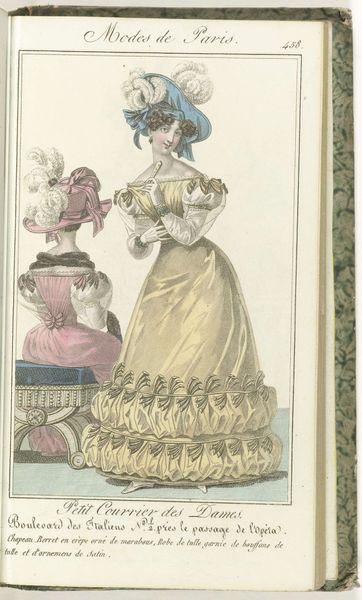
drawing, print, watercolor
#
portrait
#
drawing
# print
#
watercolor
#
romanticism
#
watercolour illustration
#
genre-painting
Dimensions: height 201 mm, width 113 mm
Copyright: Rijks Museum: Open Domain
Curator: Oh, I’m just charmed by this illustration! It's titled *Petit Courrier des Dames, 1827, No. 446: Capote de satin...*, currently held at the Rijksmuseum. We see a scene from a fashion plate of the period, likely destined for a magazine. It combines print and watercolor, if I’m not mistaken. Editor: What strikes me most is the stillness. Despite the flurry of fashion – the bonnets and fur trim – there's a static, almost melancholic feel. Is it the somber palette, or the slightly world-weary gaze of the central figure? Curator: It’s interesting you say that, because these plates are artifacts meant to broadcast very distinct socio-economic signals. It's all about aspirational aesthetics. Here, we’re meant to observe the latest styles in Parisian fashion as indicators of taste, class, and access. These images would have circulated among a specific readership. Editor: And yet, there’s something quite intimate about the work, like a secret being shared among the ladies of the ton. I’m particularly drawn to the hat of the lady at center. It teeters dangerously. The cascade of pink ribbons and floral flourishes almost feels defiant, like a fleeting moment of whimsy amid societal pressures. Curator: Absolutely. This publication, *Petit Courrier des Dames*, emerged during a period of intense political and social change, specifically the Bourbon Restoration in France. The fashion industry became a significant cultural force, with these kinds of publications both reflecting and shaping prevailing ideas around identity, gender, and luxury consumption. This type of popular visual culture provided a script for modern life as it should be lived. Editor: I suppose that contrast, the tension between social messaging and a yearning for individuality, really elevates this piece for me. Even these idealized figures appear to possess hidden depths and unresolved feelings, despite presenting these impeccable external selves. Curator: Exactly, the clothes don’t entirely make the woman. What the plate doesn’t say about desire or circumstance or experience hangs between the lines and makes for compelling interpretation. Editor: Ultimately, these material artifacts help us feel our way back to understanding how individuals understood their places in society. What I found curious became meaningful thanks to historical context. Curator: Yes, and looking closely reminds me that historical depictions often reflect universal aspirations. The play between presentation and identity continues to this day.
Comments
No comments
Be the first to comment and join the conversation on the ultimate creative platform.
